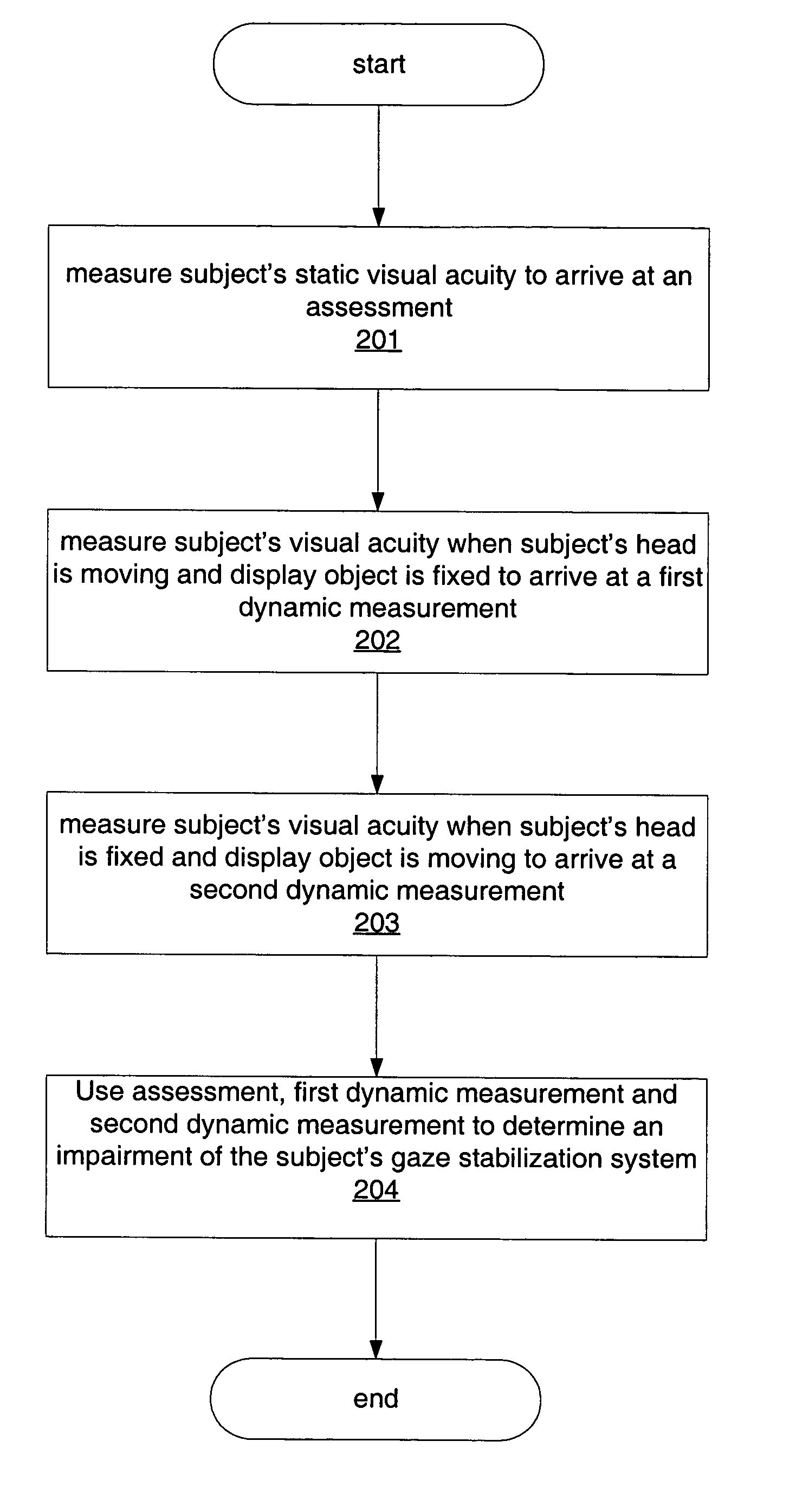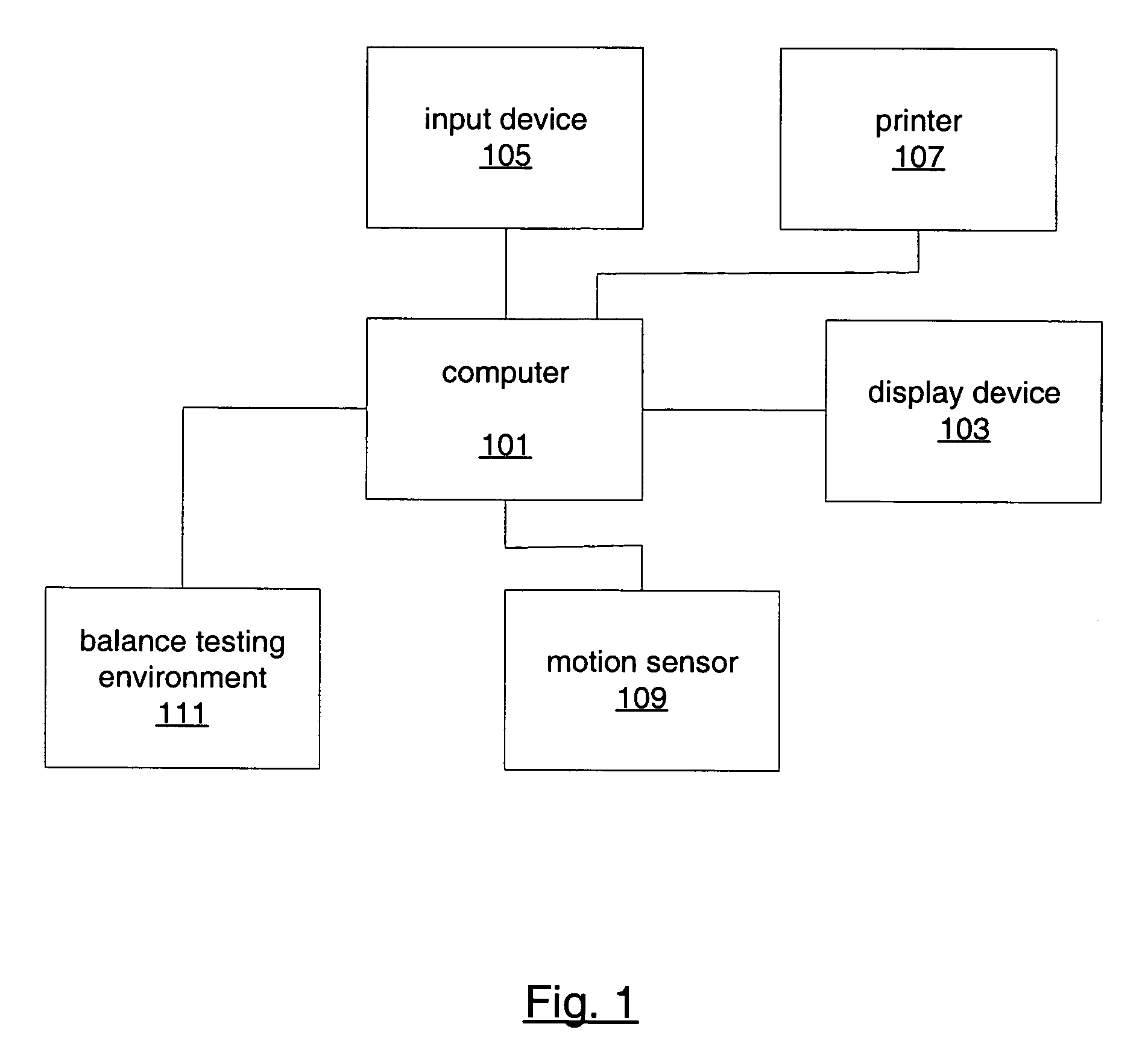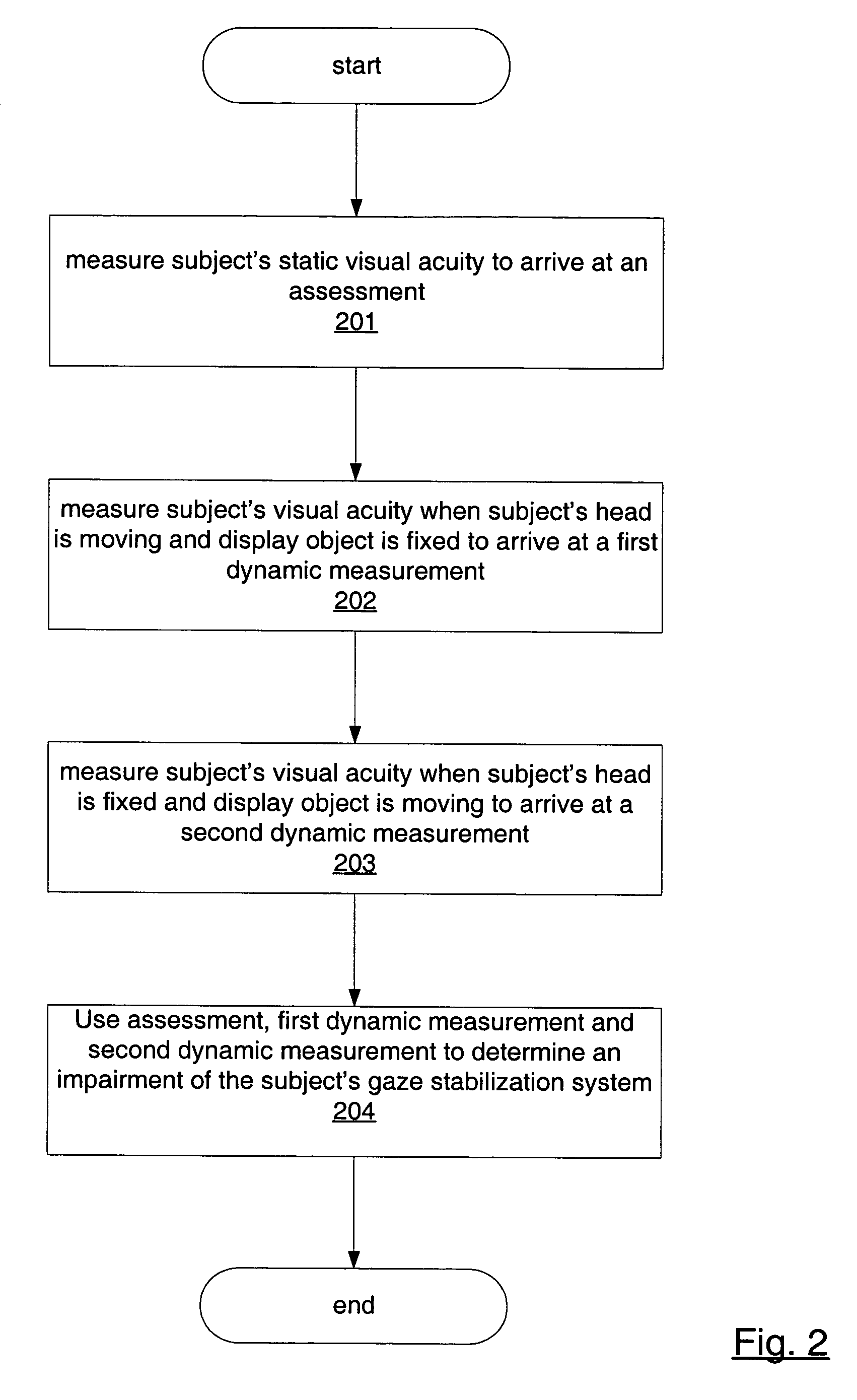In such subjects, these approaches can sometimes stabilize but seldom fully resolve the underlying pathological manifestations of the balance problem.
When individuals with impaired gaze stabilization participate in activities involving self-motion and moving objects in the surrounds, moving objects can appear blurred while stationary objects can become blurry and sometimes appear to be in motion.
1) The vestibulo-ocular
reflex (VOR) system. The VOR is a fast acting system that relies on sensory inputs from
angular velocity sensors within the
vestibular system (called semicircular canals) to reflexively rotate the eyes in directions that are equal and opposite the rotations of the head. These eye movements are mediated by relatively direct
brainstem pathways linking receptors of the semicircular canals with the
eye muscles. Hence, VOR movements are fast and able to compensate
head movements at frequencies up to 2.0 Hz without needing visual information about object position. Because VOR movements are controlled by
inner ear head velocity sensors, they are ineffective at rotation frequencies below 0.1 Hz. Furthermore, the VOR is most accurate in opposing
head movements about the
yaw axis, i.e.
head movements to the left and right of center in the horizontal plane, and is less accurate for
pitch axis movements, i.e. up and down movements in the
vertical plane.
2) The smooth pursuit
eye movement system. The smooth pursuit
eye movement system enables individuals to direct their gaze to discrete moving objects within their visual surround. This gaze stabilization system relies on visual position information from the selected object. It is significantly slower than the VOR, because the
visual feedback information is mediated by complex pathways involving
image processing within the
visual cortex. In contrast to the VOR, the smooth pursuit system is effective at the lowest frequencies of head movement and is equally accurate for movements in all directions.
3) The saccadic
movement system. The saccadic
movement system generates rapid “catch-up” eye movements directed from any given gaze position to the direction of a selected discrete object within an individual's visual surround. Like smooth pursuit movements, saccadic movements require visual position information relative to the selected visual object. In contrast to smooth pursuit movements, saccadic movements are faster acting, but they are limited to discontinuous direction changes rather than smooth continuously controlled movements.
4) The optokinetic
movement system. The optokinetic movement system generates smooth eye movements in the direction of continuous, large field motions of the visual surround. Smooth optokinetic movements in the direction of the large field motion are interposed between brief saccadic movements that return the gaze direction back to the original position. In contrast to the smooth pursuit system, optokinetic movements require large fields of continuous, uniform visual surround motion. In the absence of a discrete target, the optokinetic system can stabilize the eyes on a large field visual surround for brief intervals of time. When a discrete target and its surrounding background field are moving together, the optokinetic system can assist the smooth pursuit system in tracking the discrete object. On the other hand, when a discrete target and its large field background move differently, the smooth pursuit and optokinetic systems can potentially interfere with one another.
When individuals suffer pathological changes in one or more of the four
eye movement systems, changes in the adaptive interactions among the four systems may compensate for some of the resulting gaze problems, while other gaze stabilization problems may persist regardless of any adaptive changes.
Because systems for maintaining postural and gaze stability share visual, vestibular, and proprioceptive sources of orientation information and the systems for controlling body and head-neck stabilizing movements are coordinated, subjects with pathological changes in systems for maintaining postural stability may also experience problems with gaze stability and visual acuity.
Jerky and / or disconjugate eye movements are indicative of failure of the smooth pursuit system.
The observational DVA test has several problems that limit the value of the information in discriminating among the various causes for loss of gaze stability: (1 results are approximate, because the administrator can only estimate the velocity of the subject's head movements; and (2 some subjects can compensate for losses within the VOR stabilization system by very briefly slowing their head movements for small fractions of a second and using catch-up saccadic movements to stabilize gaze on the chart.
It is generally understood that the vestibular function and eye
movement control information provided by rotary chair, smooth pursuit, saccadic, and optokinetic tests, as well as other “site of
lesion” otologic and neurological tests of vestibular and
motor system physiological functions do not correlate well with the symptoms and functional impairments experienced during daily life activities by subjects with balance system problems.
This is because gaze and postural stabilization systems are highly adaptive, and individual subjects with similar pathologies use their residual VOR, smooth pursuit, saccadic, optokinetic, and postural stability capabilities differently, resulting in different symptoms and functional problems.
For reasons described above, however, the DVA test alone does not isolate and quantify impairments related to gaze stabilization while individuals attempt to view: (1) fixed visual targets while moving the head, (2) moving targets with the head fixed, (3) fixed or moving targets while maintaining free standing and
walking balance, and (4) combinations of these task conditions.
While medical treatments can sometimes stabilize the underlying patho-physiological processes and thereby slow the progression of
disease, such treatments seldom resolve the underlying
pathology or eliminate a subject's functional gaze and postural stability problems.
 Login to View More
Login to View More  Login to View More
Login to View More 


